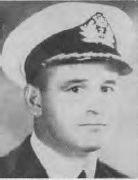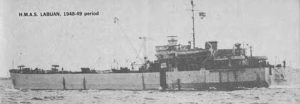With his death an historic link with the beginning of the RAN has been severed as Rear Admiral H.A. Showers, CBE was the last survivor of the first entry of ...
HMAS Moresby I
HMAS Moresby, Survey Ship
HMS SILVIO was one of four World War I Royal Navy Minesweepers converted to Survey Ships in 1922-25. Sister ships were Iroquois, Ormonde and Herald. In 1925 Silvio was lent ...
Family Saga -The Westons & The Johnstons – 1764 Onwards
Corvette Maryborough 1941-1946
HMAS MARYBOROUGH was built by Walker’s Ltd at Maryborough, Queensland and commissioned by Lieutenant Commander G. L. Cant, RAN on 15th June, 1941. Known as the Bathurst class of mine-sweepers, ...
First of the Line – HMAS Albatross, first aircraft carrier
WHEN THE AIRCRAFT CARRIER1 emerged from the 1914-18 war as a major weapon of war, it was inevitable that the Royal Australian Navy – with the largest island continent in ...
The RAN in Antarctic Waters
Australian Naval History on 14 March 1946
HMAS Moresby paid off and on 3 February 1947 she was sold for breaking up to Broken Hill Pty Co Ltd. She was subsequently scrapped at Newcastle, NSW ...
Australian Naval History on 3 October 1945
HMAS Gympie, in company with HMA Ships Moresby, Hawkesbury (I), Katoomba and Gladstone, were present at Koepang in Portuguese Timor for the surrender of the 48th Japanese Division. A naval ...
Australian Naval History on 11 September 1945
Japanese forces on Timor signed the surrender document on board HMAS MORESBY, (survey vessel/escort). ...
Australian Naval History on 7 September 1945
The sloop HMAS Moresby (I), accompanied by ten other Australian warships (including HMAS Parkes) and two Dutch vessels, sailed from Darwin to conduct the ceremony of surrender of all Japanese ...

